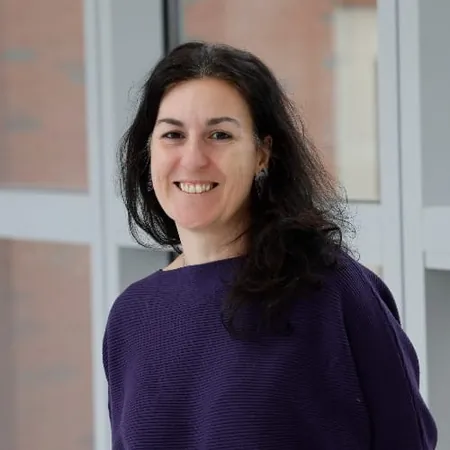
Breakthrough Mouse Study Reveals Secrets to Nerve Repair Through DNA Structure!
2024-09-26
Author: Arjun
Exciting New Research
COLUMBUS, Ohio – Exciting new research conducted by scientists from The Ohio State University Wexner Medical Center and Imperial College London has uncovered vital insights into how nerve cells repair themselves, potentially paving the way for groundbreaking treatments for nerve injuries.
Study on DNA Structure
This pioneering study delved into the three-dimensional (3D) structure of DNA within nerve cells and how it influences their healing capabilities after injury.
Ilaria Palmisano, PhD, the study's first author and a key investigator in Ohio State’s Department of Neuroscience and Department of Plastic and Reconstructive Surgery, emphasized the significance of this discovery: “We identified that specific DNA structures, known as promoter-enhancer loops, play a crucial role in activating genes essential for nerve regeneration. These loops are stabilized by a protein complex called cohesin. Without this protein, the DNA loops fail to form correctly, hindering the healing process of nerves.”
Research Collaboration
Conducted during her time at Imperial College London alongside co-investigator Professor Simone Di Giovanni, MD, PhD, and other researchers including specialists from the University of Miami, this study is published in the journal PNAS.
Importance of Gene Activation
The research highlights that the ability of neurons, or nerve cells, to regenerate within the peripheral nervous system hinges on the activation of regenerative genes. These genes are responsible for producing new proteins that facilitate nerve repair.
Di Giovanni noted, “Chromatin, the cellular 'instruction manual,' is compactly organized inside the cell nucleus. Its unfolding in response to specific signals is vital for how these instructions are interpreted and executed by the cell.” Previously, the team had found that the organization of chromatin significantly impacts gene activation essential for nerve repair.
Chromatin Organization
In their recent experiments with mice, the researchers uncovered another layer of complexity in chromatin organization that is critical for healing nerve injuries. By establishing that chromatin is arranged into intricate structures with 3D domains, they showed that loops formed within chromatin allow for interaction between distant genomic elements, boosting gene activity crucial for regeneration.
Notably, the study found that following an injury in the peripheral nervous system, specific interactions arise between distinct regenerative genes and their regulatory enhancers. This highlights a finely tuned mechanism that is triggered after nerve injury.
Implications of the Findings
“Our findings have considerable implications for the field of neuronal biology and open new avenues for innovative repair strategies,” Palmisano concluded. The team plans to explore how cohesin activation occurs post-injury, aiming to enhance its function to promote regeneration, especially in instances where this ability is compromised, such as in the central nervous system.
Future Directions
As this research unfolds, it could lead to revolutionary treatments for nerve damage, ultimately offering hope to countless individuals suffering from injuries or neurological disorders. Stay tuned for more groundbreaking developments!


 Brasil (PT)
Brasil (PT)
 Canada (EN)
Canada (EN)
 Chile (ES)
Chile (ES)
 Česko (CS)
Česko (CS)
 대한민국 (KO)
대한민국 (KO)
 España (ES)
España (ES)
 France (FR)
France (FR)
 Hong Kong (EN)
Hong Kong (EN)
 Italia (IT)
Italia (IT)
 日本 (JA)
日本 (JA)
 Magyarország (HU)
Magyarország (HU)
 Norge (NO)
Norge (NO)
 Polska (PL)
Polska (PL)
 Schweiz (DE)
Schweiz (DE)
 Singapore (EN)
Singapore (EN)
 Sverige (SV)
Sverige (SV)
 Suomi (FI)
Suomi (FI)
 Türkiye (TR)
Türkiye (TR)
 الإمارات العربية المتحدة (AR)
الإمارات العربية المتحدة (AR)